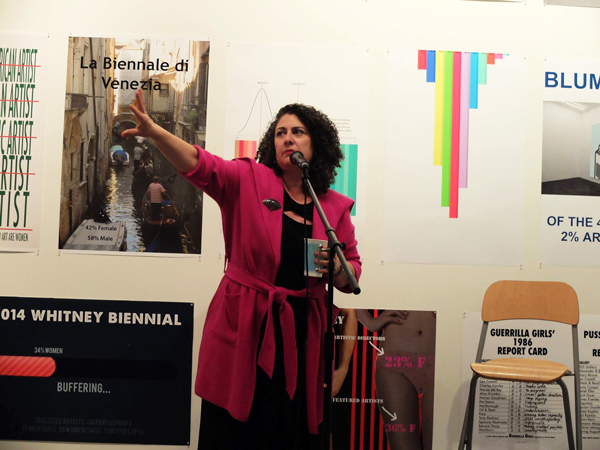Los Angeles Contemporary Exhibitions, located right in the middle of the Walk of Fame, isn’t just a rare example of a nonprofit contemporary art space right out where the public can get to it. For many up-and-coming artists, a well-reviewed show at LACE can mean the difference between having to tell your parents you’re trying to make art for a living and having to tell the IRS. Sarah Russin has been executive director at LACE for almost three years and worked at LA art-machine feeders Otis and Art Center before that. We had a conversation about what the LA art scene looks like from where she sits.
Zak Smith: Do you feel like you have a lot of responsibility?
Sarah Russin: Yes. In 2018 LACE will have been around for 40 years. We were around before the Hammer or MOCA. As a venue for serious art, we’re kind of unique.
Do you feel like you learned anything unexpected about LA, artists or the audience during the time you’ve been executive director?
Artists in LA continue to amaze me by how entrepreneurial they are—they create new opportunities for themselves in every corner.
Entrepreneurial how?
Artists are looking for spaces to show their work when the formal venues are limited, they’re creating their own way, creating partnerships—Meghan Gordon’s “some times” was a traveling bar with a neon sign, her project included a women artists’ discussion panel at LACE; Micol Hebron’s “Situation Room” is a converted garage where there are events, dinners, and performances; Young Chung’s Commonwealth and Council was named after the address of his old apartment which he turned into a gallery.
Yeah I talked to Carolina Miranda from the LA Times and a big part of her interest in LA art is the garage shows. They’re very LA, they’re like a secret.
I’d also like to say something about the art schools: I’ve worked at two of the art schools out of the big three and a lot of the art in LA has to do with the art schools and the sheer number of programs. I’m always up for pitching that art education is valuable and not just people getting an MFA to get a feeling of approval. For an 18-year-old, art school is about engaging curiosity and engaging creativity in a different way, I really believe in art-school culture. A lot of people say you don’t need art school—often it’s those who benefited from art school who say that.
I think the larger complaint about art school is basically that folks are always looking at the art world and mostly seeing stuff they don’t like, so the schools are an institution they can blame it on. People like to blame the art fairs or the critics or the collectors or the gallerists or the magazines or whatever institution they don’t see themselves personally as a part of.
I think that’s very perceptive.
Is the art press in LA usually excited about the same LACE shows you are?
Yes, though there was one project last year that got no coverage —it was taisha paggett’s [the artist uses lower case for both her names]. Her project was an installation and dance, and I think it was very hard to wrap your head around and it wasn’t a traditional project. She comes out of a world of dance and choreography outside the traditional art space.
Talking about the Gallery Talley project you said “a conversation” is “what we value most”. So: if you had a choice between showing work which everyone agreed was good, interesting and challenging and another show which everyone agreed was less good, less interesting and less challenging but which was guaranteed to start a big and interesting conversation—would you choose to have that second show?
(The answer here is very long but ultimately gets to… ) I guess I don’t know what you’re getting at?
Well, bad example maybe, but if you showed George Bush’s paintings it’d start a conversation. If that’s what you value most…
Well we want to show work that’s challenging and engaging and also gets a conversation started—I think it’s a false dichotomy.
Well I guess a dichotomy was implied when you said one thing was what you valued “most.”
Okay, true.


